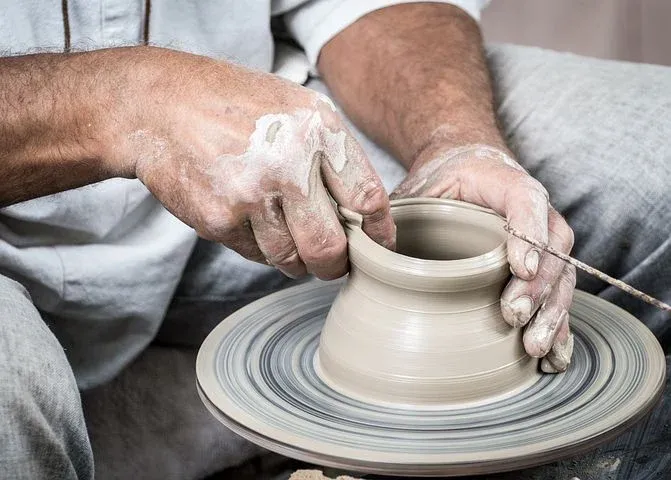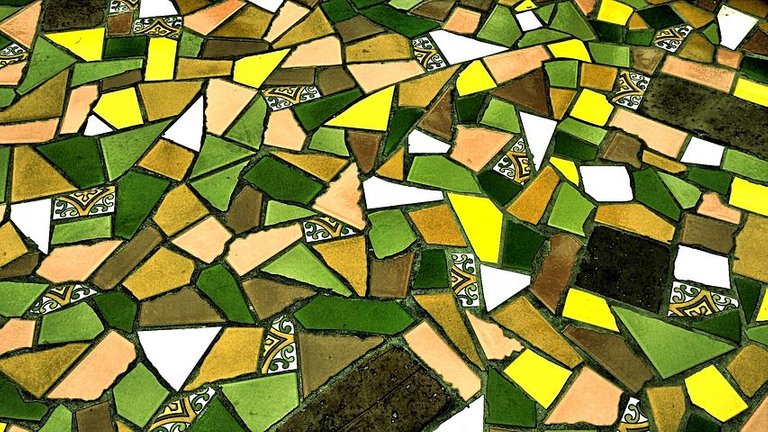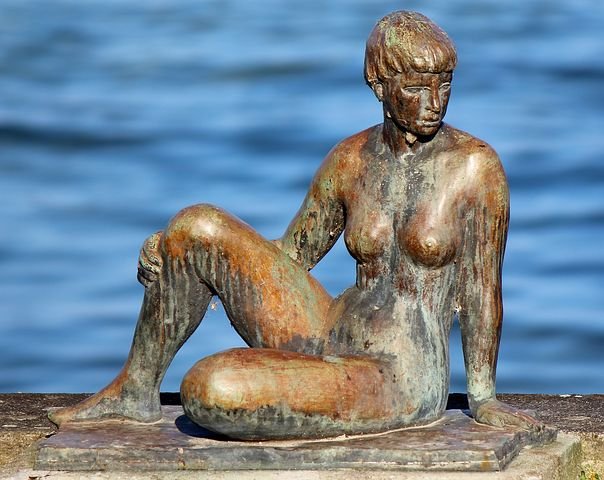Ceramics and sculpture their inter - relationship.
Today let us look into CERAMICS AND SCULPTURE.
 [source] (
[source] (
https://pixabay.com/photos/pottery-handmade-hands-cup-vase-1139047/)
Ceramics and sculpture are two discipline of art which are closely related. Their inter - relationship dates back to the dawn of history when the early man started to express himself in concrete form. Clay was one of his first medium of expression because pottery appears to be his first form of art. Clay modeling is one of the richest means of man's expression of his artistic impulse to create. Give a little child a lump of clay, almost at the same time he starts to create objects with it. He rolls it into ropes, balls and several other forms. Later he starts to combine these forms in a variety ways. If he is not disturbed, gradually thinking enters into it and recognisable forms begins to emerge. This is the beginning of sculpture and ceramics.
In this post, you are going to be introduced to the art of sculpture and ceramics. Perhaps this is not completely strange to you. If so, your creative Ability is going to be challenged. But if not, just like the little child, you will find using the plastic material very interesting to work and your artistic impulse will be stimulated.
 [source] (
[source] (
https://pixabay.com/photos/ceramic-ceramic-tile-707169/)
CERAMICS
When any time mention is made of ceramics the mind quickly flashes back to pottery. Even though pottery is an important aspect of ceramics, yet pottery alone does not constitute ceramics. The word " ceramics" was derived from Greek word "Keramos." Keramos means the potter's earth. This of course would mean clay. Probably in those days of the ancient Greeks, Ceramics practice was limited to potteries. A lot of potteries were produced in Greece, especially in Corinth and Athens. Today ceramics is defined broadly as embracing all objects made of clay, either useful or ornamental, and later hardened with fire. By this definition, ceramics will include pottery, different types of uses, vessels, files, clay beads, ceramic sculpture and many more.
 [source] (
[source] (
https://pixabay.com/photos/ancient-pottery-pots-clay-antique-2179091/)
It appears that pottery was the foundation of ceramics. The oldest clay products from escalation were mostly pot forms which were for day to day use. The survival instinct was dominant in those early days. Thus, the making of useful objects in clay. Due to the plastic nature of clay and its abundance, pottery is one of the most appealing among other crafts and probably the most widely practised. Each nation of the world discovered how to make pottery independently. There are relics of potteries that date back to 9000 BC. It is interesting to note, however, that the art of pottery is evidence of settled societies or communities. The Aborigenes of Papua New Guinea, who until recently were hunters and gatherers did not acquire the art of pottery making.
There were evidences of fired clay objects among the Egyptians, Mesopotamain and Babylonian peoples that date back to 600 -3000 BC. Among the primitive peoples all over the world, there were evidences of fired clay objects. They made pottery from clay which they found in river beds. This they pounded and shaped with their hands and later on sun. Baked it and fired it in open fire. Back in Nigeria here people engage in a lot of ceramics practice. Variety of ceramics products are common in the local markets. These objects include pots' and other vessels, earthen lamps, ritual vessels, planters, clay files and lot more. Abuja potteries constitute a pride for Nigeria.
 [source] (https://pixabay.com/photos/sandburg-art-sand-sculptures-1639999/)
[source] (https://pixabay.com/photos/sandburg-art-sand-sculptures-1639999/)
While Sculpture
Is the art of representing observed or imagined objects in solid materials. Sculpture is one of the oldest and most wide spread of the visual arts. There is no nation without its own form of sculptural background. Sculpture is a three dimensional art which are : height, breadth and depth. This is what gives it its solidity. Apparently there are two basic types of sculpture.
 [source] (https://pixabay.com/photos/sculpture-statue-bronze-sculpture-507342/)
[source] (https://pixabay.com/photos/sculpture-statue-bronze-sculpture-507342/)
Statuary in which figures are shown in the round. You can go round the object and view it from all sides - front, back and the two sides. Examples of this types of sculpture are the statues you see in important places in towns and cities. More examples are the plastic toys which children carry about in the house and play with or those beautiful figures you put on the tables to decorate the sitting room.
Another type is 'relief ' in which forms and shapes are projected from the background of solid surface. These in returns have two different types that are popular. Which are "high relief" or technically "haut". Example of high relief are the carvings on the carved door panels where the figure and other decorative forms are raised high above the background. The other type of relief is called "low relief " or technically "bas - relief". Example of low relief could be found on coins, medals, crests, and others Where the figures and the decorative forms are slightly raised above the surface. There is other type of relief but this particular one is not popular. It is called the the sunk relief. Here instead of raising the forms above the background, they are sunk lower into the background. This particular one is hardly practiced in these country and as such examples are a bit difficult to cite. A peculiar type of example are the marble.
This is where I will drop the curtain for today. Thank you for your time have a blast.... Day
@tipu curate
Upvoted 👌 (Mana: 56/112) Liquid rewards.
Thank you